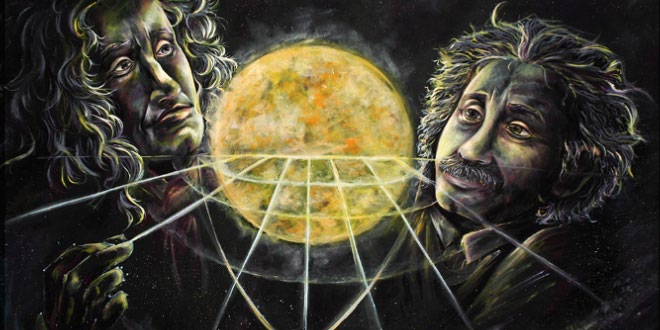Question: What is the importance of universal law of gravitation?
Answer:
Universal law of Gravitation is important because it it tells us about:
→ the force that is responsible for binding us to Earth.
→ the motion of moon around the earth
→ the motion of planets around the sun
→ the tides formed by rising and falling of water level in the ocean are due to the gravitational force exerted by both sun and moon on the earth.
Question: What is the acceleration of free fall?
Answer: Acceleration of free fall is the acceleration produced when a body falls under the influence of the force of gravitation of the earth alone. It is denoted by g and its value on the surface of the earth is 9.8 ms-2.
Question: What do we call the gravitational force between the Earth and an object?
Answer: Gravitational force between the earth and an object is known as the weight of the object.
Question: Amit buys few grams of gold at the poles as per the instruction of one of his friends. He hands over the same when he meets him at the equator. Will the friend agree with the weight of gold bought? If not, why? [Hint: The value of gis greater at the poles than at the equator].
Answer:
Weight of a body on the Earth is given by:
W = mg
Where,
m = Mass of the body
g = Acceleration due to gravity
The value of gis greater at poles than at the equator. Therefore, gold at the equator weighs less than at the poles. Hence, Amit’s friend will not agree with the weight of the gold bought.
Question: Why will a sheet of paper fall slower than one that is crumpled into a ball?
Answer:
When a sheet of paper is crumbled into a ball, then its density increases. Hence, resistance to its motion through the air decreases and it falls faster than the sheet of paper.
Question: Gravitational force on the surface of the moon is only 1/6 as strong as gravitational force on the Earth. What is the weight in newtons of a 10 kg object on the moon and on the Earth?
Answer:
Weight of an object on the moon = 1/6 ×Weight of an object on the Earth
Also,
Weight = Mass × Acceleration
Acceleration due to gravity, g = 9.8 m/s2
Therefore, weight of a 10 kg object on the Earth = 10 × 9.8 = 98 N
And, weight of the same object on the moon= 1.6 × 9.8 = 16.3 N.
Question: A ball is thrown vertically upwards with a velocity of 49 m/s. Calculate
(i) the maximum height to which it rises.
(ii) the total time it takes to return to the surface of the earth.
Answer:
According to the equation of motion under gravity:
v2 – u2 = 2gs
Where,
u = Initial velocity of the ball
v = Final velocity of the ball
s = Height achieved by the ball
g = Acceleration due to gravity
At maximum height, final velocity of the ball is zero, i.e., v= 0
u = 49 m/s
During upward motion, g = -9.8 m s-2
Let h be the maximum height attained by the ball.
Hence,
0 – 492 = 2×9.8×h
⇒ h = 492/(2×9.8)
⇒ h = 2401/19.6 = 122.5
Let t be the time taken by the ball to reach the height 122.5 m, then according to the equation of motion:
v = u + gt
We get,
0 = 49 + t x (- 9.8)
9.8t = 49
t = 49 / 9.8 = 5s
Also,
Time of ascent = Time of descent
Therefore, total time taken by the ball to return = 5 + 5 = 10 s
 Class Notes NCERT Solutions for CBSE Students
Class Notes NCERT Solutions for CBSE Students



